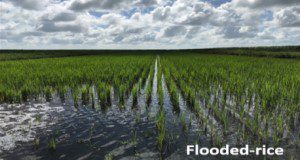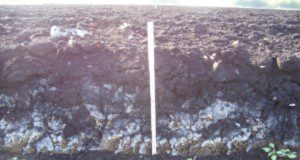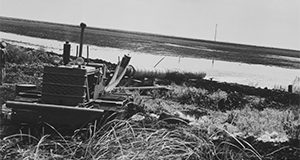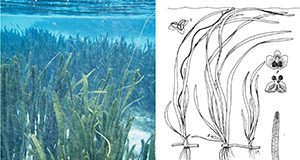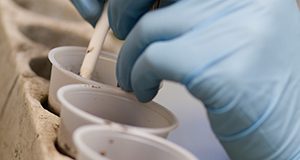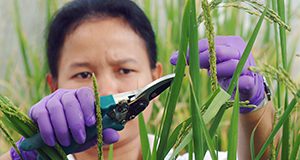Evaluating changes in soil properties associated with flooded fields during the summer months in the Everglades Agricultural Area (EAA) provides us an opportunity to assess the effect of soil management associated with flooded versus dry-fallow field conditions on Histosols. This information will be beneficial to current and potential growers farming flooded rice in south Florida, as well as Extension agents who work on rice and soil conservation agencies such as the USDA Natural Resources Conservation Service (NRCS). This new 6-page publication was written by Jehangir H. Bhadha, Jay Capasso, Abul Rabbany, Nan Xu, and Matthew VanWeelden, and published by the UF/IFAS Department of Soil and Water Sciences.
https://edis.ifas.ufl.edu/ss697
Tag: Jehangir H. Bhadha
Bagasse: A Potential Organic Soil Amendment Used in Sugarcane Production
Bagasse is an agricultural by-product derived from the sugarcane milling process. It is a dry and fibrous residue left after the extraction of sugar juice from sugarcane. This 5-page document is a preliminary investigation into the possible effects of using bagasse as a soil amendment. Written by Jehangir H. Bhadha, Nan Xu, Raju Khatiwada, Stewart Swanson, and Chris LaBorde, and published by the UF/IFAS Department of Soil and Water Sciences, August 2020.
https://edis.ifas.ufl.edu/ss690
Everglades Agricultural Area Soil Subsidence and Sustainability
This 4-page major revision, a publication of the UF/IFAS Department of Soil and Water Sciences, highlights the current status of Histosols within the Everglades Agricultural Area in southern Florida. Over the last century, soils within the region have gradually been lost via oxidation, a process commonly referred to as soil subsidence. The rate of subsidence is gradually declining, due to factors such as increased mineral content in soil, humification, and water management (maintenance of higher water tables). Best Management Practices and crop rotation help slow down the rate of oxidation and promote soil sustainability within the region. Written by Jehangir H. Bhadha, Alan L. Wright, and George H. Snyder.
https://edis.ifas.ufl.edu/ss523
Rice Physiology, Products, and Critical Steps Associated with Postharvest Operations in Southern Florida
This 5-page document pertains to the UF/IFAS Extension programs related to rice production in the EAA and focuses on the steps that comprise postharvest processing of rice (drying, tempering, milling, and storage). It aims to highlight the physiology of the rice kernel and define some of the common terms used in the rice industry, elaborate on the steps in postharvest processing, and provide a brief overview of rice products and their market potential. Written by Jehangir H. Bhadha, Sangeeta Mukhopadhyay, Charlene Andrews, and Matthew VanWeelden, and published by the UF/IFAS Agronomy Department, September 2019.
http://edis.ifas.ufl.edu/ag438
Tapegrass, Eelgrass, or Wild Celery (Vallisneria americana Michaux): A Native Aquatic and Wetland Plant
This 5-page document describes the main features of tapegrass and summarizes important habitat requirements for its growth and restoration. Written by Mohsen Tootoonchi, Lyn A. Gettys, and Jehangir H. Bhadha, and published by the UF/IFAS Agronomy Department, September 2019.
http://edis.ifas.ufl.edu/ag437
Tools for Evaluating Soil Health
Soil health is a term synonymous with soil quality. It refers to the chemical, biological, and physical characteristics that influence a soil’s ability to function sustainably and to satisfy the needs of humans, support plants, and cycle elements, water, and energy between earth systems. This four-page fact sheet identifies ways to evaluate soil health. Written by Jehangir H. Bhadha, Jay Capasso, Robert S. Schindelbeck, and Allan R. Bacon and published by the Department of Soil and Water Sciences.
http://edis.ifas.ufl.edu/ss657
Trends in Rice Production and Varieties in the Everglades Agricultural Area
Rice production in the Everglades Agriculture Area (EAA) of Florida dates back nearly seven decades. For a brief period in the 1950s about 2,000 acres of rice was grown in the EAA. Rice was reintroduced in the EAA in 1977 after it was demonstrated that rice could be successfully incorporated into the sugarcane production cycle during the fallow period. This three-page fact sheet provides a history of rice production in Florida and information about rice varieties grown in Florida. Written by Jehangir H. Bhadha, Luigi Trotta, and Matthew VanWeelden and published by the Soil and Water Sciences Department.
http://edis.ifas.ufl.edu/ss653
Producing biochar using a custom designed Top-lit Updraft (TLUD) gasifier
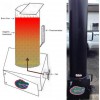 Biochar can be produced in a wide variety of ways; some are complex, while others are relatively simple. Researchers at the University of Florida Everglades Research and Education Center in Belle Glade, FL, designed and built a top-lit updraft (TLUD) gasifier that can generate biochar from locally acquired feedstock. This 4-page fact sheet describes its design and evaluates the biochar recovery of four locally available feedstocks. Written by Jehangir H. Bhadha, Stephen Jennewein, Julio Sanchez, and Timothy A. Lang, and published by the UF Department of Soil and Water Science, September 2014.
Biochar can be produced in a wide variety of ways; some are complex, while others are relatively simple. Researchers at the University of Florida Everglades Research and Education Center in Belle Glade, FL, designed and built a top-lit updraft (TLUD) gasifier that can generate biochar from locally acquired feedstock. This 4-page fact sheet describes its design and evaluates the biochar recovery of four locally available feedstocks. Written by Jehangir H. Bhadha, Stephen Jennewein, Julio Sanchez, and Timothy A. Lang, and published by the UF Department of Soil and Water Science, September 2014.
http://edis.ifas.ufl.edu/ss626
